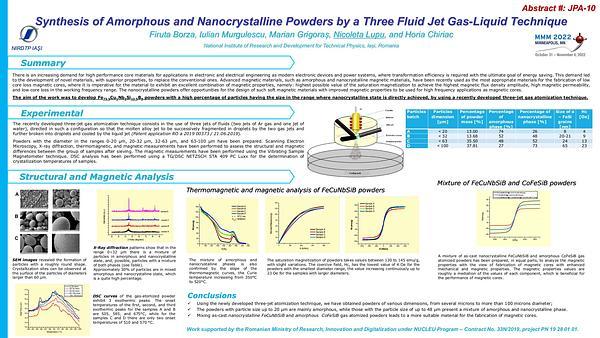Would you like to see your presentation here, made available to a global audience of researchers?
Add your own presentation or have us affordably record your next conference.
The magnetostrictive effect can be used in advanced magnetic field sensors, magnetoelectric antennas, non-reciprocal microwave devices and spin wave logic devices. Among the primary considerations in the design of these devices is Gilbert damping. However, a full understanding of the mechanisms which cause damping of magnetization dynamics in ferromagnets remains elusive. Of particular interest is whether magnetoelastic coupling contributes to the Gilbert damping in highly magnetostrictive films. There is no clear answer yet. Most studies have focused on yttrium iron garnet (YIG) film, which is weakly magnetostrictive. Recently, some researchers1 reported a large anisotropy of the Gilbert damping in highly magnetrostrictive FeGa films, and the measured in-plane damping factors is one order of magnitude higher than the out-of-plane one. The result was attributed to the enhanced magnetoelastic contribution to the Gilbert damping, which is mitigated for perpendicular-to-plane fields.
Amorphous FeCoSiB is a well-known soft magnetic material with excellent magnetostrictive properties. Here, we have prepared FeCoSiB(58nm)/Ti(5nm) film on Si substrate, and performed vector network analyzer ferromagnetic resonance (VNA-FMR) measurements using a coplanar waveguide from 10 to 300 K. The temperature-dependent in-plane Gilbert damping factor of the film is extracted and shown in Fig. 1. A very low Gilbert damping factor αGilbert of about 0.004 is observed at 300K. With the decrease of temperature, αGilbert firstly increases and then decreases, and reaches a peak value at ~40 K. The similar trend is also reported in the permalloy film with a TaN capping layer, and can be explained as bulk Gilbert damping and surface/interface damping. The bulk Gilbert damping is conductivitylike and comes from intraband scattering. However, the magnetoelastic damping αme contributed by magnetostriction and viscosity is not observed.
References:
1 Peria W K, Wang X, Yu H, et al. Magnetoelastic Gilbert damping in magnetostrictive Fe0.7Ga0.3 thin filmsJ. Physical Review B, 2021, 103(22): L220403.

Fig. 1 Measurement of Gilbert damping in FeCoSiB(58nm)/Ti(5nm) thin films. (a) VNA-FMR spectra at 9, 11, 13, 15 and 17 GHz at 300 K, after background subtraction. (b) frequency dependent in-plane FMR linewidths. (c) temperature dependent Gilbert damping factor.
